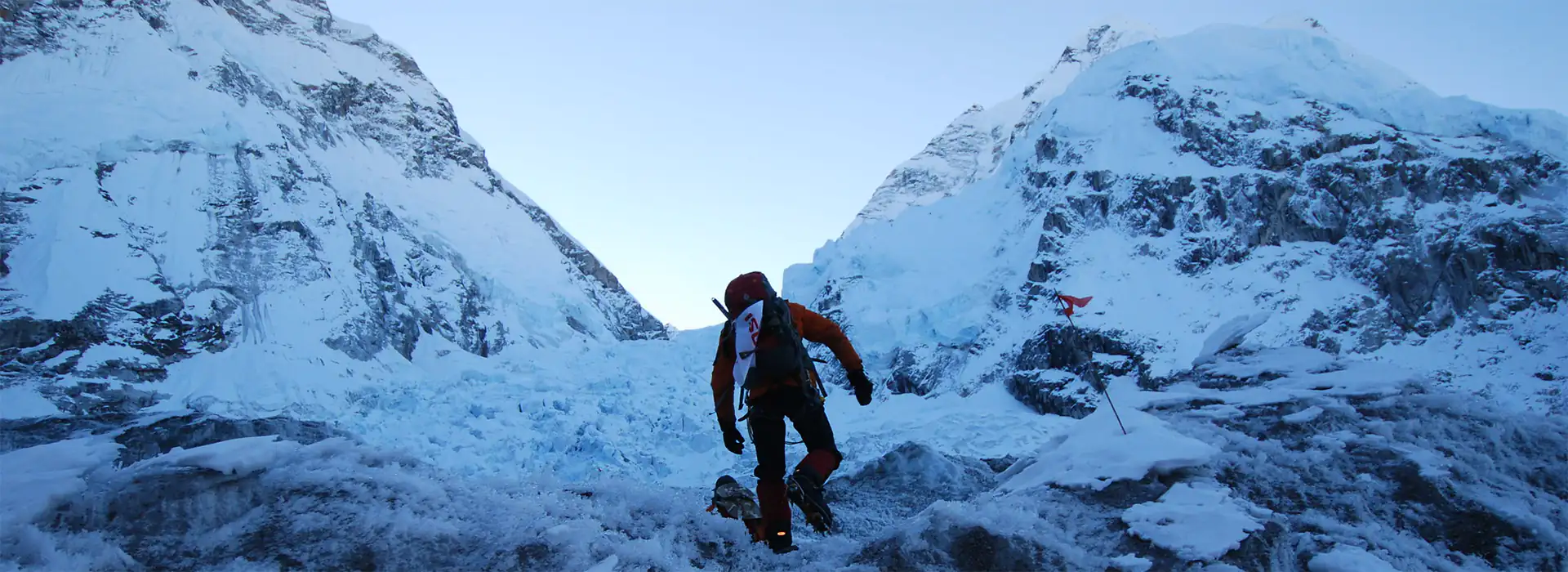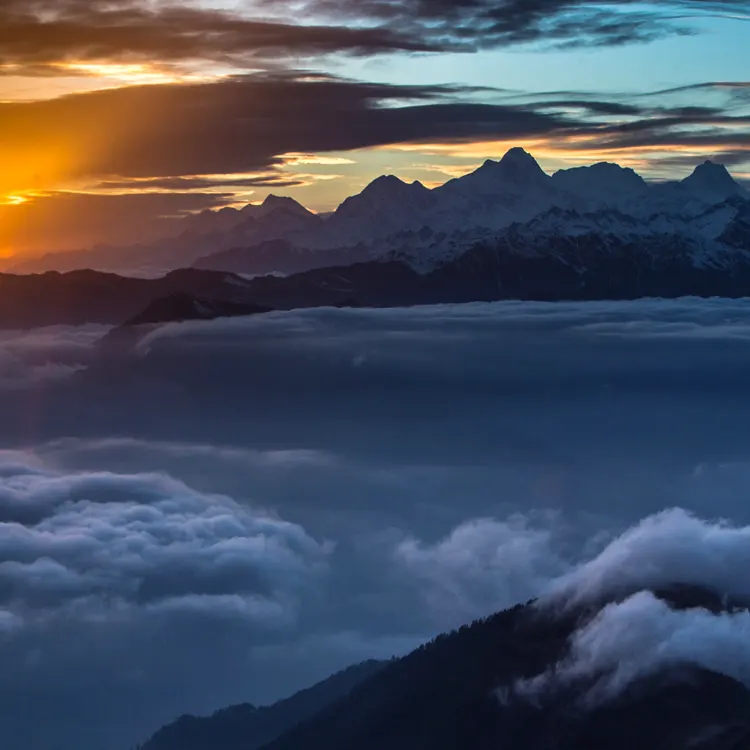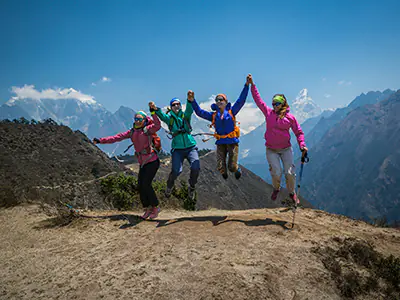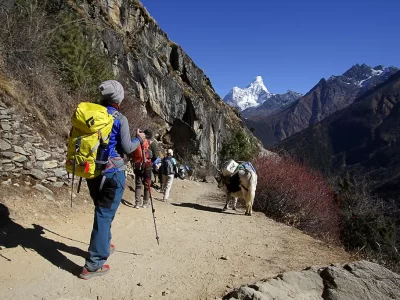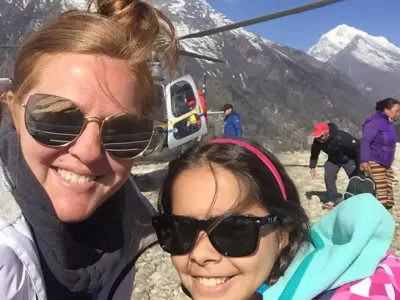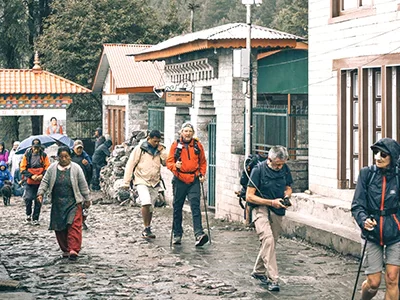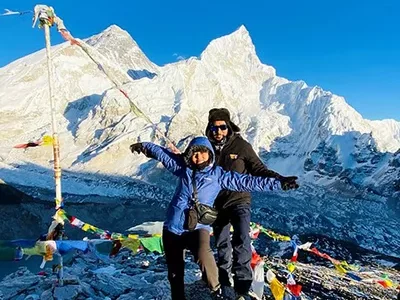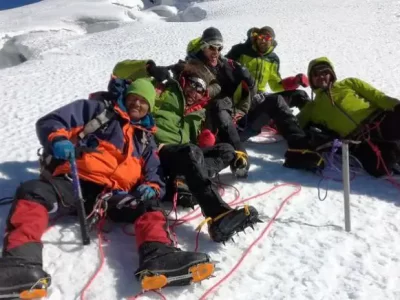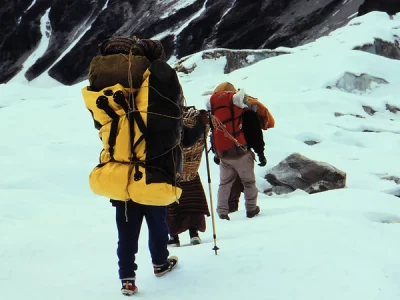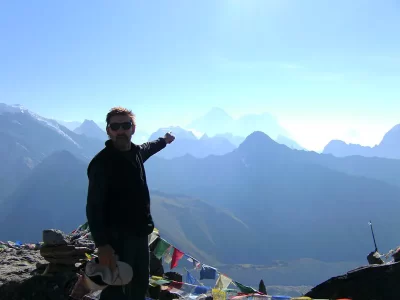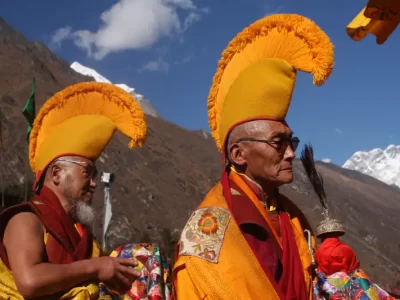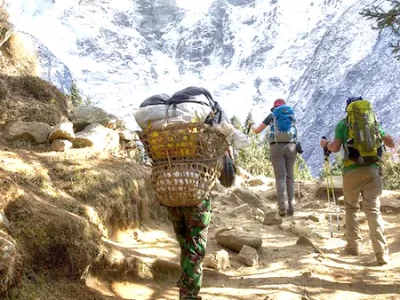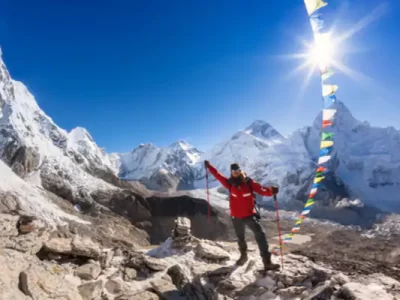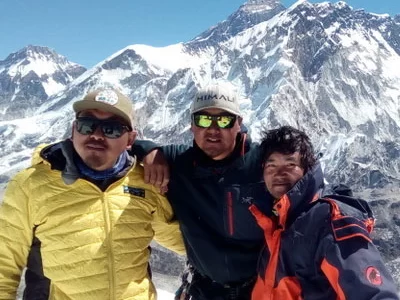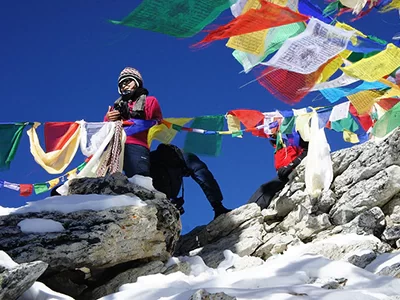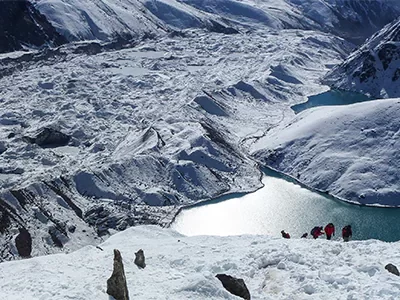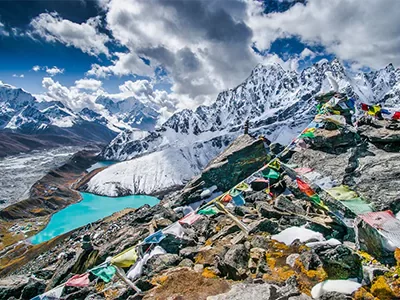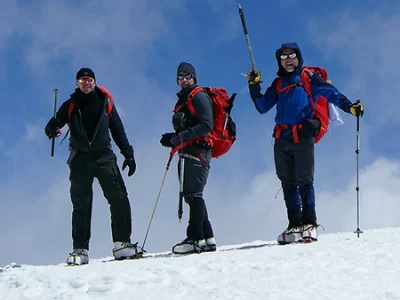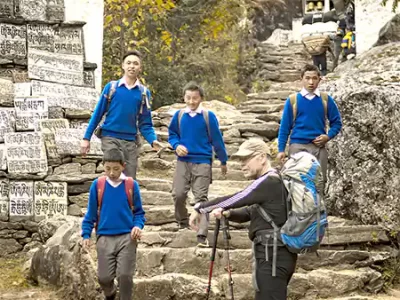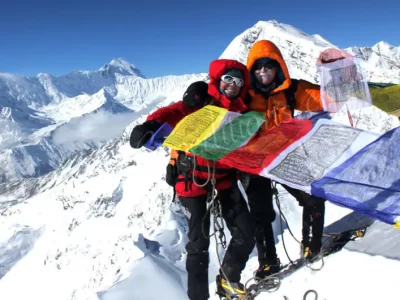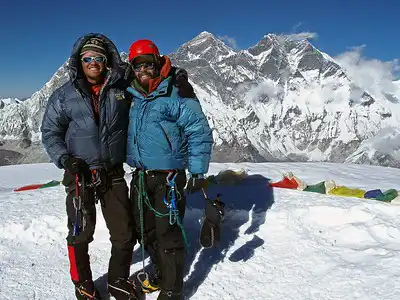The divine element of the Himalayan experience is convenient in the northeastern region of Nepal. Mount Everest, the world’s highest peak, with an elevation of 8848 meters, also lies in this region. From the beautiful mountain village of Namche Bazaar to one of the most natural scenic routes over 5000 meters, “Kalapathhar” makes the trek in the Everest region one of the defining moments in Nepal. In addition, the diverse array of natural features—including waterfalls, hazy eastern vistas, and culture and tradition—makes trekking in the Everest region more ambitious. Trekking in the Everest Region, which encompasses the entire atmosphere of the eastern Himalayas, is a magnificent way to experience insightful northeast Nepal.
Everest Region Packages
Everest Base Camp Trek for Beginners
Everest Base Camp Short Trek
Everest Base Camp Trek with Helicopter Return
Luxury Everest Base Camp Trek
Everest Base Camp Trek
Chulu West Peak Climbing
Rolwaling Tashi Lapcha Pass Trek
Gokyo Renjo La Pass Trek
Mani Rimdu Festival Trek
Everest View Trek
Jiri to Everest Base Camp Trek
Lobuche Peak Climbing
Everest High Pass Trek
Gokyo Lakes Trek
Gokyo Cho La Pass Trek
Mera Peak Climbing
Island Peak Climbing with EBC Trek
Everest Panorama Trek
Chulu East Peak Climbing
Ama Dablam Expedition
Major Attraction of the Everest Region
Mount Everest
The Nepalese tourism business benefits significantly from Mount Everest, the world’s tallest summit. It will be a towering endeavor to trek at more than 8000 meters, which goes up to the troposphere. People from all over the world come to conquer the mountain’s summit. The first individuals to traverse the treacherous trek to the summit of Mount Everest were Sir Edmund Hillary and Tenzing Norgay Sherpa. Similarly, the entire Everest is snowy white, with various mountains such as Nuptse, Lhotse, Kanchenjunga, and Makalu defending encircling it. Most trekkers begin their trek from Namche Bazaar and use all of their might to achieve the summit of Mount Everest. Overall, Mount Everest is the most elegant aspect of the Everest Region.
Tenzing-Hillary Airport
Tenzing-Hillary Airport, the world’s most treacherous airport, will be your first experience while trekking in the Everest region. The airport lies in the center of a mountain at more than 2500 meters. It will take around 30 minutes to fly from Kathmandu to Lukla. And this 30-minute flight will be among your most remarkable experiences. Before touching down at Tenzing-Hillary Airport, the plane will fly through verdant hills, landscape boundaries, and meadows. The airport itself is a sight to behold. Only Dornier and Twin Otter aircraft can land and take off from this airport. The airport’s west side has a steep edge, and the east side has walls. Thus only skilled pilots can fly there.
Adventure to Gokyo
The entire Gokyo valley will be visible if you take Tengboche’s North West side trail. The Gokyo Lake is the key attraction in the region. The mix of six lakes that make up Gokyo Lake gives it a unique appearance of being enormous. The Gokyo Lake is a great site to behold and ranks among the top attractions in the world. At the height of almost 5000 meters, Gokyo Lake is one of the world’s highest freshwater lakes. During the winter, the beautiful blue freshwater transforms into a large congregation of crystals. These lakes are closely underneath the Gokyo RI, another significant draw of the Gokyo.
Trek from Namche Bazaar to Kalapathhar
While trekking in the Everest region, the Namche Bazaar hamlet allows you to explore diverse Himalayan settlements. Everything about this place will be beyond your wildest dreams, from the lively market to the serene monasteries. The classiest perspectives from this hamlet emanate from the typical dwellings that dangle down the Slopes and hillsides. Some excellent antique museums depict the history of the Sherpa people who cross the Himalayas. The Namche Bazaar is a convenient starting point for a trek to several other sights. You will arrive at Tengboche when heading north on the trail and passing through the Sherpa communities. Tengboche offers a diverse range of religious monasteries explore, with one of the most well-known “Tengboche Monastery.”
The Kalapathhar, at a height of around 5555m following Everest Base Camp, will be another significant attraction. The Kalapathhar will greet you when you head north from Gorakshep. The excellent vantage point is Kalapathhar. From this elevation, it will be phenomenal to glimpse the bare vista of Kanchenjunga, Lhotse, Ama Dablam, and Makalu. Additionally, the view from here will be pretty close-up and give a clear viewpoint of “Mount Everest.” Trekking in the Everest region will be much more spectacular if you include a helicopter flight from Kala Patthar. Similarly, the trip to Kalapathhar will be consistent and more adventurous, making it the most exciting component of trekking in the Everest Region.
Sagarmatha National Park and Majestic Glaciers
The natural world heritage site “Sagarmatha National Park” is home to various vulnerable mountain wildlife and vegetation. The Sagarmatha National Park region is home to Red Pandas, Snow Leopards, and Himalayan Deer. The greenery, which comprises pine trees and rhododendron, will be stellar, envision close underneath Everest. Nevertheless, there are several other exquisite glaciers in the Everest region, including the Khumbu Glacier, Imja Glacier, Hinku Glacier, Lhotse Glacier, and Ngozumpa Glacier being the major attractions while trekking in the Everest Region.
Best time for trekking in the Everest Region
The Eastern Himalayas and the hilly region of Nepal get considerable rainfall, and the weather varies often. Likewise, snow falls throughout the entire year. Consequently, trekking in the Everest region will be worthwhile if undertaken appropriately. Autumn and springtime are the finest seasons to visit. The weather will be stunning, and there will be an excellent view of the Everest region. The temperate air will also make your trek more soothing. Due to the low likelihood of rain and snow throughout these two seasons, the view of the landscapes, waterfalls, villages, and Himalayas will also be remarkable. As a result, spring and autumn will be the exquisite seasons for trekking in the Everest region.
Peak Climbing in the Everest Region
There are several peaks to climb in the Everest region. The three most well-known summits are Mera Peak, Island Peak, and Lobuche Peak. These summits have attracted considerable attention from seasonal climbers. Additionally, these peaks rise to an elevation of around 5000 and 6000 meters, making climbing the best experience possible. Furthermore, each of these peaks is close to the others. While Mera Peak is adjacent to Ama Dablam, Island Peak lies below Lhotse and Makalu. However, Lobuche Peak is adjacent to the great white face of Mount Everest. Trekking in the Everest region is, therefore, an exciting experience in the Himalayas that offers a variety of opportunities to experience the chilly northeast part of Nepal.
